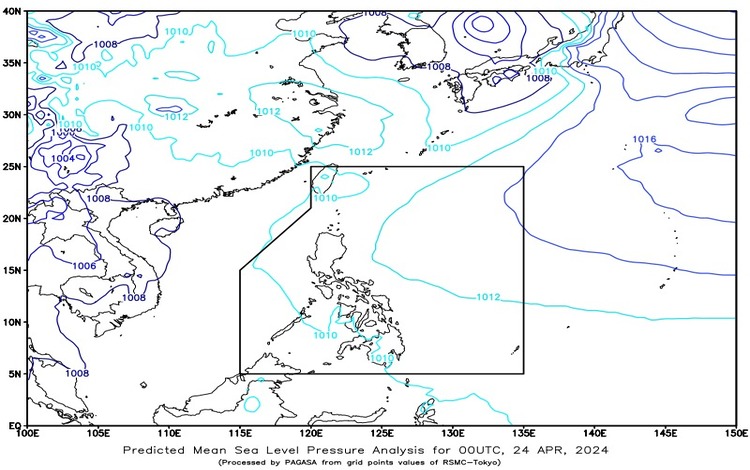Meteorologists have issued a comprehensive weather forecast for various regions in the Philippines. As the country braces itself for the day ahead, understanding the anticipated weather conditions becomes paramount for both individuals and authorities to prepare adequately. Here’s what you need to know:

Synopsis: The prevailing weather patterns indicate the influence of two significant weather systems over different parts of the Philippines. The Intertropical Convergence Zone (ITCZ) is primarily affecting southern Mindanao, while easterlies dominate the weather in the rest of the country.
Forecast Weather Conditions: Southern Mindanao (Davao Region, South Cotabato, Sarangani, Sultan Kudarat, Basilan, Sulu, Tawi-Tawi, Zamboanga del Sur, and Zamboanga Sibugay) Expect cloudy skies with scattered rain showers and thunderstorms throughout the day. These conditions are attributed to the presence of the ITCZ. Residents should remain vigilant as moderate to heavy rains may trigger flash floods or landslides in vulnerable areas.
Metro Manila and the rest of the country: Anticipate partly cloudy to cloudy skies with isolated rain showers or thunderstorms. This weather pattern is influenced by easterlies and localized thunderstorms. While rainfall may not be as widespread as in southern Mindanao, severe thunderstorms could still cause flash floods or landslides in affected areas.
Forecast Wind and Coastal Water Conditions: Across the entire country, expect light to moderate winds blowing from the east to southeast direction. Coastal waters are projected to be slight to moderate, with wave heights ranging from 0.6 to 1.8 meters. Mariners and fishermen are advised to proceed with caution, especially those operating smaller vessels.
Precautionary Measures: Given the forecasted weather conditions, it is essential for residents, particularly in areas prone to flooding and landslides, to remain vigilant and take necessary precautions. Stay tuned to local weather updates and heed any advisories or warnings issued by relevant authorities. Secure loose objects outdoors, avoid unnecessary travel during inclement weather, and be prepared for possible disruptions to transportation and outdoor activities.
As the nation navigates through diverse weather patterns, staying informed and prepared is key to ensuring safety and minimizing potential risks associated with adverse weather conditions. By exercising caution and acting prudently, individuals and communities can effectively cope with the challenges posed by changing weather dynamics.
